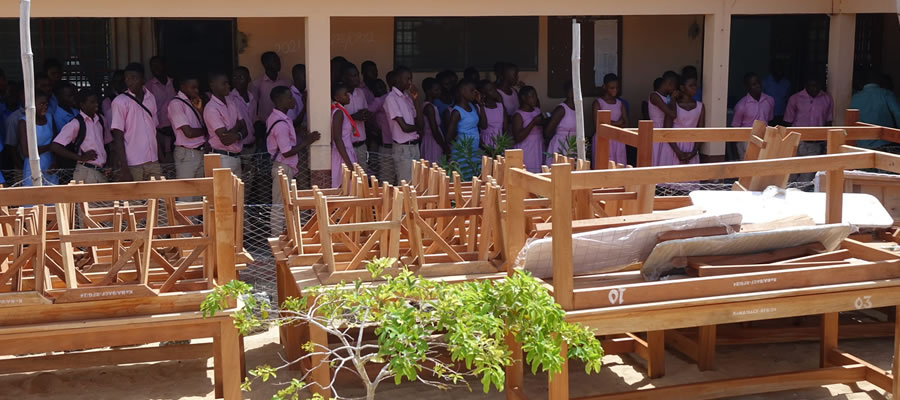

Development Goals and Objectives
The Focus of the plan is to enhance wealth creation, skills development and increased participator} decision making in order to improve standard of living through:
- Modernized agriculture, food processing, improved support services and employment generation.
- Human resource development raid improved access to basic services and utilities
- Strengthening decentralized local structures, involve the vulnerable and excluded in decision making and ensure probity, transparency and accountability in governance
Monitoring and Evaluation
Monitoring
The Assembly and all collaborators will have to undertake a continuous or periodic review and surveillance at all stages of implementation. In all activities it is important to ensure that input deliveries, work schedules, targeted outputs and other required actions proceed as planned. This will ensure efficient and effective performance and provide feedback to management. It will also enable operators to improve operational plans and take timely corrective action where it is required. It is therefore important that the DPCU put in place a strong monitoring scheme. This scheme should be able to specify the data required for monitoring including Action Plans/work schedule (Targets/indicators) Technical details, materials supplies and financial flow. The appropriate monitoring tools that will establish benchmarks, indicators /milestone, data sources and reporting procedures and format must be used. Chapter two which adopts the PPM will therefore be very essential in this process.
Evaluation
The programs and projects will have to be evaluated to assess the established strengths of projects and programs, pinpoint shortcomings, their causes and propose suitable improvements. This will require the Assembly to focus on the conditions, operations, performance as well as impacts of the projects. This should encourage learning experiences for those involved in the implementation process and serve as the basis for recommendation and decision-making. The process should consider the set goals and objectives under the various themes, it will answer questions on the relevance, adequacy, effectiveness and impact of the activities, objective and goals. The monitoring and evaluation will have to be participatory. We are still expecting the standard monitoring formats from the National Development Planning Commission (NDPC) to be used at the district level.
Conclusion
The proposed interventions are based on the key issues isolated from the collated data and particularly the summary of the commumtv needs and aspirations. There is no doubt that the needs are more than the Assembly can meet but it represents a clear development situation in the district. It also represents a first step in the full participation by people at the grass root in invoking a district development plan.
Developmental problems
Summary of Key Development Problems
The identified key development problems from the situation analysis are as presented under the thematic areas.
Micro/ District Economy
- Low production and revenue base
- Inadequate investment/working capital
- back of stable market for Agricultural products
- Low Agricultural productivity
- High cost of poultry feed/drugs
- High incidence of livestock disease
- Inadequate credit facilities
- Weak linkages between processing manufacturing and Agriculture
- Insufficient pasture for livestock during dry season
- Low savings incomes
- Conflict between crop it livestock farmers over land use
- Low lnternally Generated Revenue (IGR)
Productions and Gainful Employment
- Low level of technology and skilled labor
- Inadequate storage facilities
- High rate of environmental degradation
- Poor infrastructure base (Energy. dams, markets, post/telecommunication, roads)
- Barge number of unskilled labor
- Obsolete industrial machinery/technology
Human Resource Development and Basic Services
- Low capacity as a result of poor access to basic services
- Low academic performance
- Poor and inadequate training facilities
- Lack of skilled and entrepreneurial training centers
- Poor sanitation
- Inadequate potable water supply
- High incidence of malaria and spread of HIV/AIDS and other STDs
- Inadequate health facilities
- Increasing Malnutrition rate among children especially in rural areas
- Incidence of malaria cases in the District
Date Created : 11/21/2017 6:29:14 AM













 facebook
facebook
 twitter
twitter
 Youtube
Youtube
 +233 593 831 280
+233 593 831 280 0800 430 430
0800 430 430 GPS: GE-231-4383
GPS: GE-231-4383 info@ghanadistricts.com
info@ghanadistricts.com Box GP1044, Accra, Ghana
Box GP1044, Accra, Ghana